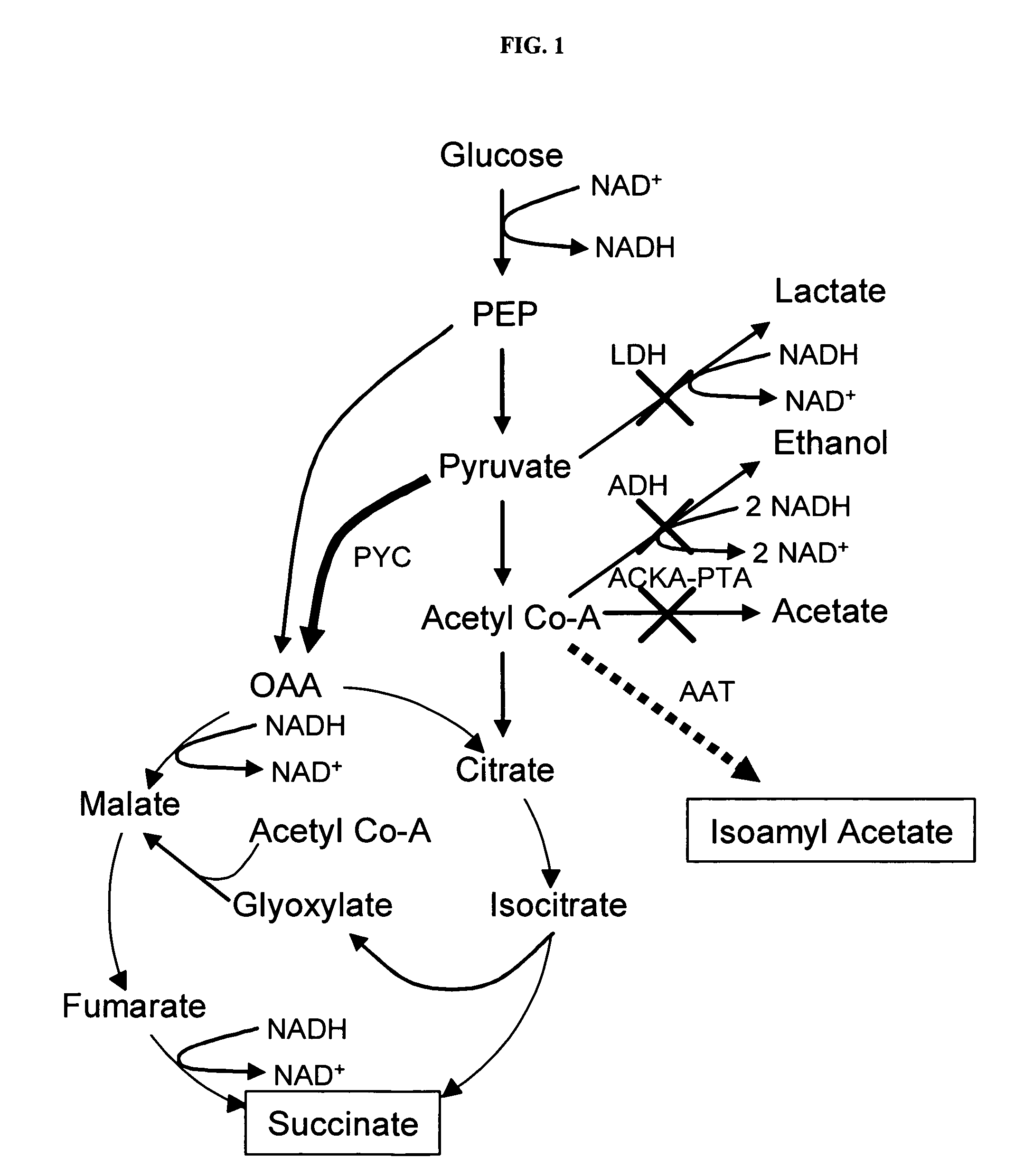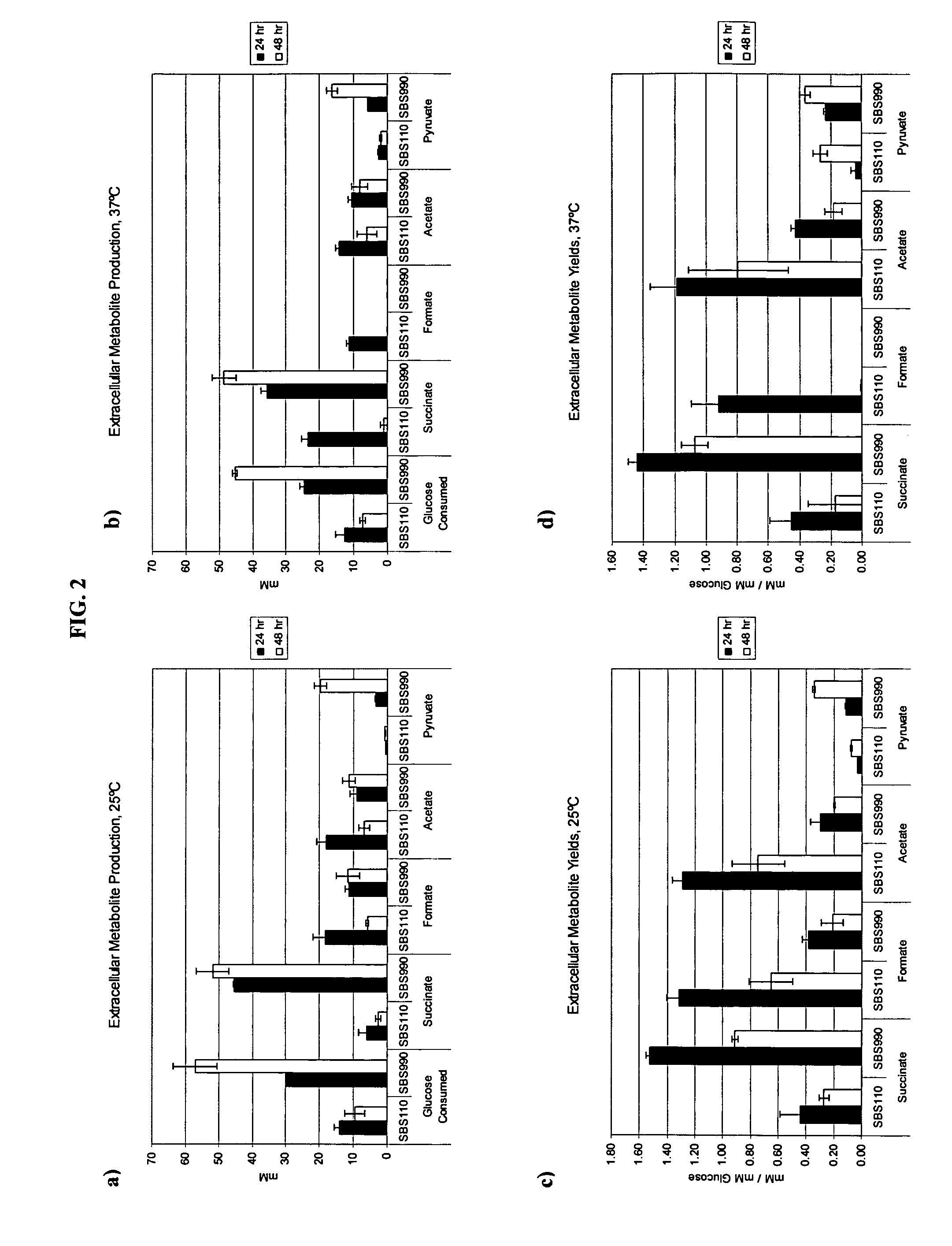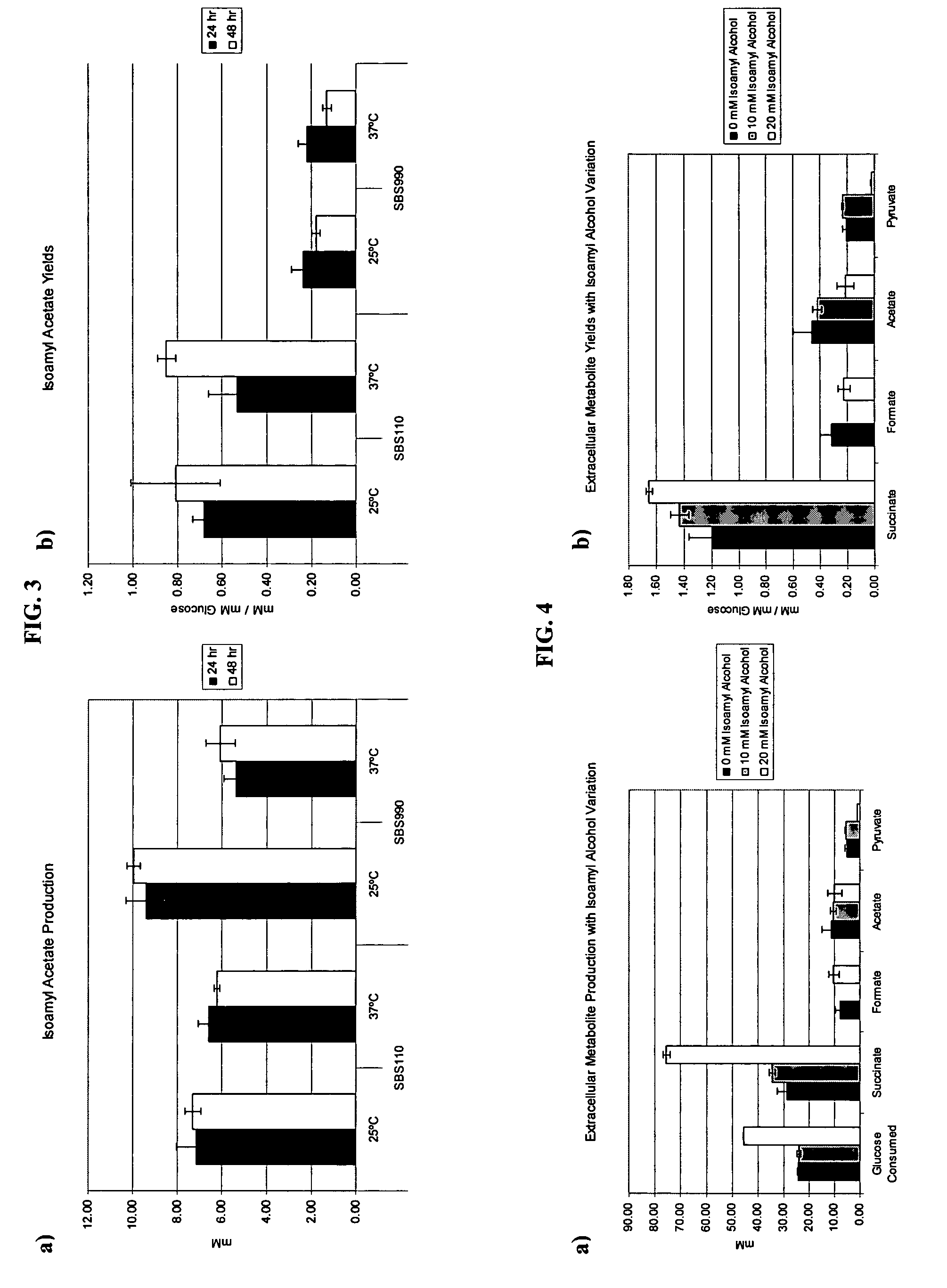Simultaneous anaerobic production of isoamyl acetate and succinic acid
a technology of isoamyl acetate and succinic acid, which is applied in the direction of enzymology, microorganisms, transferases, etc., can solve the problems of reduced molar yield and high consumption, and achieve the effect of positive effect on production
- Summary
- Abstract
- Description
- Claims
- Application Information
AI Technical Summary
Benefits of technology
Problems solved by technology
Method used
Image
Examples
Embodiment Construction
[0022]The objective of this study was to utilize succinate production as a way of maintaining the proper redox balance between NADH and NAD+ while maximizing isoamyl acetate production. An adhE, idhA double mutant served as the parent strain to compare with an adhE, ldhA, ackA-pta triple mutant. The ackA-pta acetate-producing pathway has been widely shown to reduce recombinant protein production. In addition to a loss of carbon and therefore an economic sink, acetate is also detrimental because it inhibits cell growth (6, 8, 14). The work identified the effects of temperature, sampling time, and substrate concentration on production of the two valuable compounds.
[0023]Carboxylic acids described herein can be a salt, acid, base, or derivative depending on structure, pH, and ions present. For example, the terms “succinate” and “succinic acid” are used interchangeably herein. Succinic acid is also called butanedioic acid (C4H6O4). Chemicals used herein include formate, glyoxylate, lact...
PUM
| Property | Measurement | Unit |
|---|---|---|
| volume | aaaaa | aaaaa |
| volume | aaaaa | aaaaa |
| flow rate | aaaaa | aaaaa |
Abstract
Description
Claims
Application Information
 Login to View More
Login to View More - R&D
- Intellectual Property
- Life Sciences
- Materials
- Tech Scout
- Unparalleled Data Quality
- Higher Quality Content
- 60% Fewer Hallucinations
Browse by: Latest US Patents, China's latest patents, Technical Efficacy Thesaurus, Application Domain, Technology Topic, Popular Technical Reports.
© 2025 PatSnap. All rights reserved.Legal|Privacy policy|Modern Slavery Act Transparency Statement|Sitemap|About US| Contact US: help@patsnap.com



